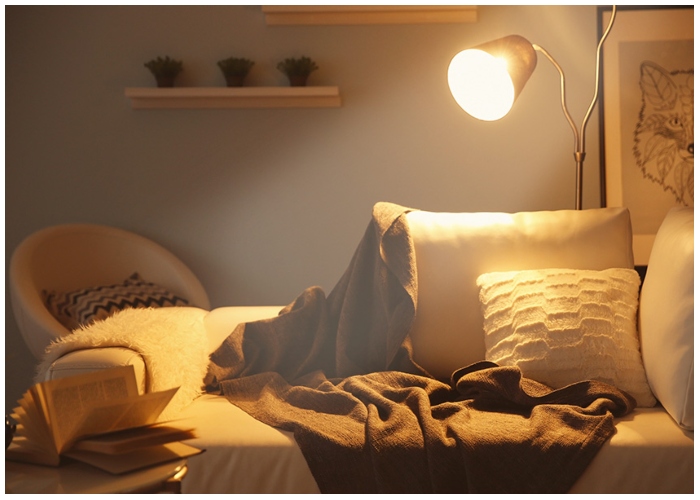In 2025, home design is no longer just about aesthetics—it’s about how a space makes you feel. Mood-based home styling, the latest trend reshaping interiors, is all about creating rooms that support your emotional well-being. From calm-inducing bedrooms to energizing kitchens, this approach goes beyond matching colors and textures. It focuses on turning your home into a sanctuary that aligns with your inner life.
The Shift Toward Emotionally Intelligent Spaces
Traditional home design has often prioritized style, layout, and functionality. While those elements still matter, today’s homeowners and renters are becoming more intentional. People are now asking: “How do I want to feel in this room?” This question lies at the heart of mood-based styling. Whether you’re decorating a studio apartment or a spacious home, the goal is to craft rooms that mirror or influence your emotional state in positive ways.
This emotional design shift is driven by the growing awareness of mental health, mindfulness, and personal energy. Just like lighting and music can impact your mood, so can the colors on your walls, the textures in your furniture, and the way your space is arranged.
Using Color to Set the Tone
Color psychology plays a major role in mood-based styling. Cool tones like soft blues and muted greens are popular choices for creating calm, peaceful environments. These are ideal for bedrooms, bathrooms, or reading nooks—places where relaxation is key. On the other hand, warm tones like coral, mustard, and terra cotta can infuse a room with comfort and warmth, perfect for living areas and kitchens.
Bold colors like reds, purples, or deep navy can add drama and creativity to a space, often used in home offices, art rooms, or entryways. The key is to choose palettes that reflect or encourage the emotional atmosphere you want to maintain in each room.
Furniture with Feeling
Furniture selection also contributes to the mood of a space. Plush, oversized couches and chairs invite you to sink in and relax, making them great for de-stressing. Rounded edges and soft materials evoke comfort, while sleek, angular pieces often signal sophistication and focus.
If you’re designing a room that encourages conversation, like a living or dining room, opt for seating arrangements that face inward or are grouped closely. For more meditative spaces, like a bedroom or yoga area, minimal furniture and open floor space allow for calm and mental clarity.
Lighting as a Mood Shifter
Lighting is another powerful emotional cue. Natural light tends to boost mood and alertness, so open windows or sheer curtains are ideal during the day. At night, adjustable lighting—such as dimmers, warm-toned bulbs, or layered lighting with lamps—can help transition into a relaxed evening state.

Smart lighting systems that adjust throughout the day based on circadian rhythms are also gaining popularity. These setups can support better sleep and focus by syncing lighting with your natural biological clock.
Scent and Sound: The Overlooked Elements
While visual design gets most of the attention, scent and sound are becoming essential components of mood-based styling. Diffusers, candles, and incense with calming scents like lavender or eucalyptus can instantly shift the energy of a room. In spaces meant for activity or creativity, citrus or peppermint aromas can help stimulate the mind.
Incorporating soft background sounds—like ambient music, nature tracks, or even a small tabletop fountain—can subtly enhance the room’s vibe. These multi-sensory elements are easy to integrate and can have a surprisingly strong effect on how you experience your space.
Personalization and Intentional Decor
Decor is not just filler—it’s a tool for emotional expression. Mood-based styling embraces personalization: photos, art, books, and sentimental items are displayed not just for aesthetics but for how they make you feel. A photo that makes you smile, a piece of art that energizes you, or even a quote on the wall that keeps you grounded can all contribute to emotional alignment.
Decorating with intention means choosing items because they serve your wellness, not just because they look good. That might mean fewer decorative pieces overall, but each one will have greater emotional value.
Why It Matters Now
The rise of mood-based styling reflects a broader cultural shift toward well-being and self-awareness. As more people work remotely or spend more time at home, it makes sense to optimize our surroundings to support our emotional health. Rather than forcing your life to fit into a magazine-worthy interior, this trend encourages designing your space to fit your lifestyle and emotional needs.
This approach also welcomes evolution. As your life or emotional needs shift, so can your design. Small changes—like swapping out throw pillows, changing wall art, or adjusting lighting—can make a big difference without a full makeover.
Mood-based home styling is more than just a trend—it’s a new way of thinking about interior design. By intentionally crafting spaces that support different emotional states, you’re not just decorating a house—you’re creating a nurturing home. Whether you need calm, focus, inspiration, or energy, your environment can help provide it.
So the next time you redecorate or rearrange a room, ask yourself: How do I want to feel here? Let that answer guide you, and you’ll create a space that not only looks good—but also feels just right.